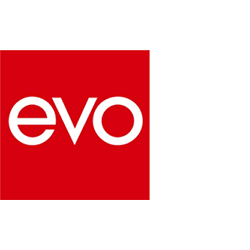As their Avaya contract drew to a close, Lee’s team partnered with Darwin Technology Solutions, their long-standing telecom consultant, to explore alternatives. They needed a cloud-based solution that could meet the unique needs of each brand under the evo Group banner, without adding overhead. The new platform also needed to roll out quickly and be intuitive for teams to adopt with minimal disruption.
The team had already seen a demo of 8x8 at an industry event, so when Darwin recommended 8x8 as a CX partner, evo was open to a deeper conversation. The more they explored, the more confident they became. 8x8’s ability to unify voice, video, chat, and contact center functionality within a single platform—and offer direct routing for Microsoft Teams—was exactly what evo needed.
evo rolled out 8x8 Work and 8x8 Contact Center across its business units. The deployment, while slightly longer than anticipated due to custom configurations for each brand, was still completed within a reasonable timeframe. “The team’s response to using 8x8 has been fantastic. Everybody loves it,” says Lee.
Staff onboarding went smoothly, thanks to a mix of one-on-one virtual training and self-serve resources. In fact, some features required no training at all—particularly 8x8 Voice for Microsoft Teams, which felt seamless for users already familiar with the Microsoft Teams environment. This integration gave evo staff the ability to make and receive external calls directly within Microsoft Teams, using the same interface they relied on for messaging and collaboration. Because 8x8’s direct routing uses Microsoft-certified infrastructure and global telephony coverage, call quality and reliability exceeded expectations—something the team had struggled with previously.
For Lee and his team, one of the most significant gains has come from 8x8’s data and analytics. Previously, visibility into calls was limited. Now, with real-time dashboards and historical reporting, evo’s contact center managers can track the entire call journey, from queue to resolution. With its previous system, evo Group had been losing visibility on calls, but 8x8’s analytics capabilities and functionality allows the company to track customer experiences.
Beyond just seeing the flow of interactions, managers are using Quality Management and Speech Analytics to coach agents more effectively. These tools help identify trends in customer interactions and surface moments that matter—whether it's an opportunity to provide feedback or a potential area for improvement. With sentiment analysis and keyword spotting, managers can dig deeper into calls without needing to manually review every interaction.








